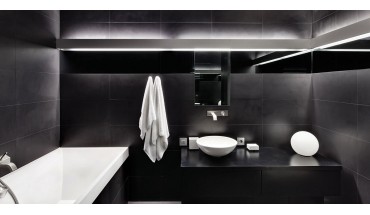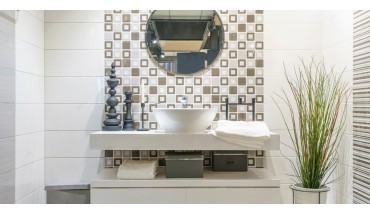
Bathtub materials affect the look, feel, weight, heat retention—and price—of these high-ticket plumbing fixtures. And since tubs are not easy to replace, it really pays to know what you are buying so you can be happy with your choice for many years to come. Here are some basic pros and cons for each of the most common bathtub materials to help you make the right selection when buying a new bathtub.
Porcelain Enameled Steel
Porcelain-enameled steel is a very common and often inexpensive option. It is constructed of steel sheeting that is coated with porcelain enamel. This type of tub is somewhat heavier than acrylic or fiberglass but is much lighter-weight than old-fashioned enameled cast iron.
PROS
Can be very affordable
Relatively lightweight
Available in standard sizes (60 x 30 inches)
Durable
Easy to clean
CONS
Surface can chip when objects are dropped
Rust tends to form with even the smallest chip
Limited options for color and shape
Can be noisy if not insulated
Loses heat quickly
02 of 05
Acrylic
Acrylic tubs are a very popular option due to their versatility, durability, wide range of options, and low cost. This type of tub is made from vacuum-formed acrylic sheets that are reinforced with fiberglass. Acrylic tubs are lightweight and relatively easy to install.
PROS
Lightweight
Affordable
Available in many colors, shapes, and sizes
Durable
Non-porous surface
Surface is repairable
CONS
Surface can scratch if cleaned with abrasive cleaners
Stress points must be properly reinforced during installation
Acrylic is more expensive than fiberglass
03 of 05
Fiberglass (FRP)
Fiberglass is another affordable bathtub material. This type of tub is made of layers of surface coat, polyester resin, and fiberglass reinforcement. Fiberglass tubs are less expensive than acrylic but also less durable.
PROS
Lightweight
Easy to install
Very inexpensive
Easy to clean and maintain
Surface can be repaired
Great option for a shower/tub combination
CONS
Not as durable as other materials
Surface can crack and scratch
Finish tends to fade
Limited color options
04 of 05
Enameled Cast Iron
A classic bathtub material, enameled cast iron is very durable—and very heavy. The tub is made of molded iron coated with porcelain enamel. A cast-iron tub is a higher-end option, but it is an investment that will really last. The only significant disadvantage (and a serious one) is the weight. A cast-iron tub can be quite difficult to install because it is so heavy and may require structural reinforcement of the floor.
PROS
Very durable
Thick enamel is resistant to chipping and scratching
Can be resurfaced
Timeless look
Excellent heat retention
Many color choices available
CONS
Very heavy
Continue to 5 of 5 below.
05 of 05
Cast Polymer (Cultured Marble, Granite, or Onyx)
Cast polymer bathtub materials include engineered natural stone and solid surface materials. These are made by molding together minerals, polymeric materials, and resins to form a solid material similar to solid-surface countertops (such as Corian). The tubs typically are finished with a gel-coat finish.
PROS
Can be affordable
Many color and options
Surface scratches can be buffed out
Easy to clean
Stain-resistant
CONS
Can be brittle
Wearing of gel coat can lead to unrepairable cracks















